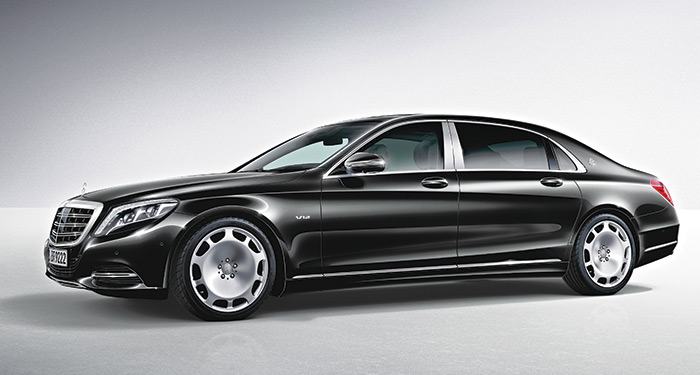
Jens feels that the return of Maybach represents a cost-effective approach to the upper-luxury segment. And it underscores the importance of China. Twelve years ago, one of the most impressive automotive launches of all time took place. A new luxury sedan was transported to New York in a glass box, atop the Queen Elizabeth II – the flagship of the Cunard Line. In New York, it was airlifted by helicopter to the centre of the financial world – Wall Street. Maybach was born again. The massive four-door sedan impressed observers with its style and power – but technologically, it was dated at launch. Its basis was the W140 S-Class of the 1990s, with an electronics architecture derived from the W220. The Maybach 57 and 62 had Bentley and Rolls-Royce firmly in sight. It competed with the most expensive luxury cars. Daimler proclaimed that in order to ensure Maybach’s exclusivity, production would not exceed 1,000 units per year. This solemn pronouncement was not necessary. Sales numbers never came close to this level – and, technologically, the Maybach was humbled by subsequent generations of the S-Class. When the last models were sold in 2013, the image of a brand that no one remembered at its re-launch was somewhat tarnished. Maybach was closed down. No one would have expected the brand to make such a rapid comeback. But here it is – in the form of the Mercedes-Maybach S-Class. This time around, Maybach is a sub-brand, and the upcoming upper-luxury sedan will remain fairly close to the regular S-Class. Available with a 333 horsepower V6, a 455 horsepower V8, and a 530 horsepower V12, its powertrain is shared with regular S-Class models. 4MATIC all-wheel drive is standard on the China-only V6, and will be available on the V8. A six-cylinder Maybach? “The concept of Maybach does not depend on cylinder count,” says Daimler’s marketing chief Ola Kallenius. Indeed, Maybach is about size and styling now. The Mercedes-Maybach S-Class will be distinguished from regular S-Class models by its high level of equipment – and it is more spacious, with exactly 20 centimetres more at the wheelbase. Outside, the Mercedes-Maybach S-Class is distinguished from other S-Class models by a Maybach logo on the C-pillar, a fully chrome-plated B-pillar, and bespoke wheel and paint choices. The Mercedes-Maybach models are available with every feature and gimmick from the S-Class parts bin. This means that, with their current portfolio, it’ll be impossible for Bentley and Rolls-Royce to catch up. The overall look, I think, works extremely well on the S-Class. I just think the interior ought to be more distinguished. Almost everything that the Maybach comes with is available on the regular S-Class as well. “The brand has to be re-learned,” says Daimler marketing chief Ola Kallenius. What Daimler doesn’t say, though, is that cost is kept at a minimum. The take rate of Mercedes-Maybach within the S-Class portfolio is not crucial to the company’s bottom line. This time around, Maybach doesn’t take off with a ‘big bang’ like the glass container launch on the Queen Elizabeth. But the launch wasn’t exactly modest either. A few weeks ago, customers and journalists assembled for an exquisite Maybach dinner and musical performance in Guangzhou – pointedly, several hours before its launch in Los Angeles. And here’s another message from the Maybach launch – China is on track to becoming Daimler’s top priority.























Write your Comment